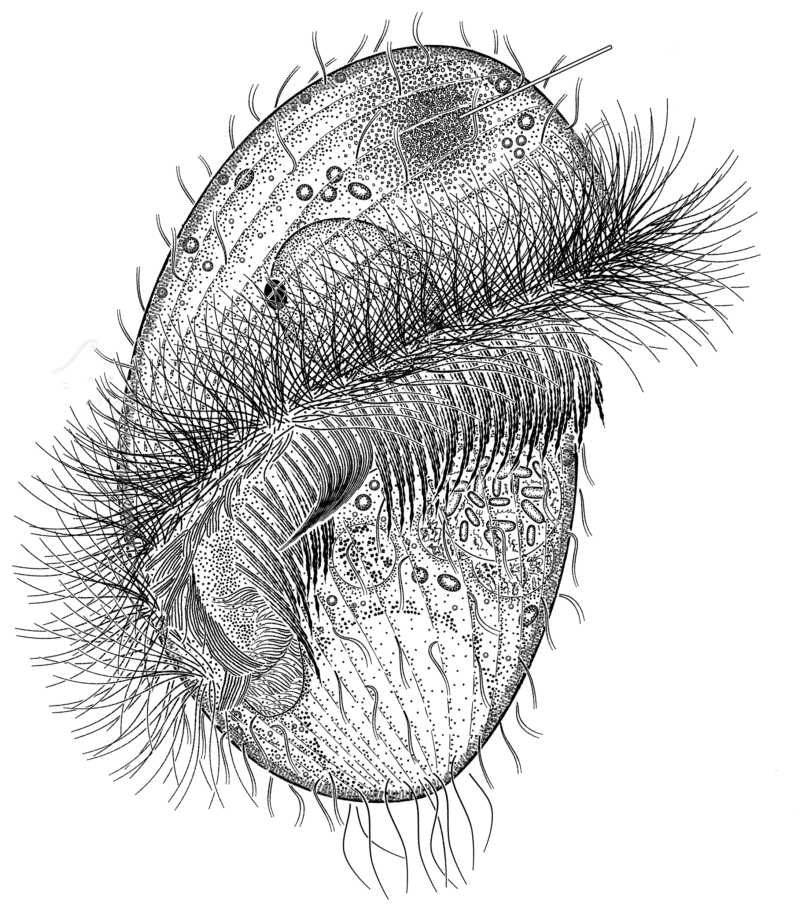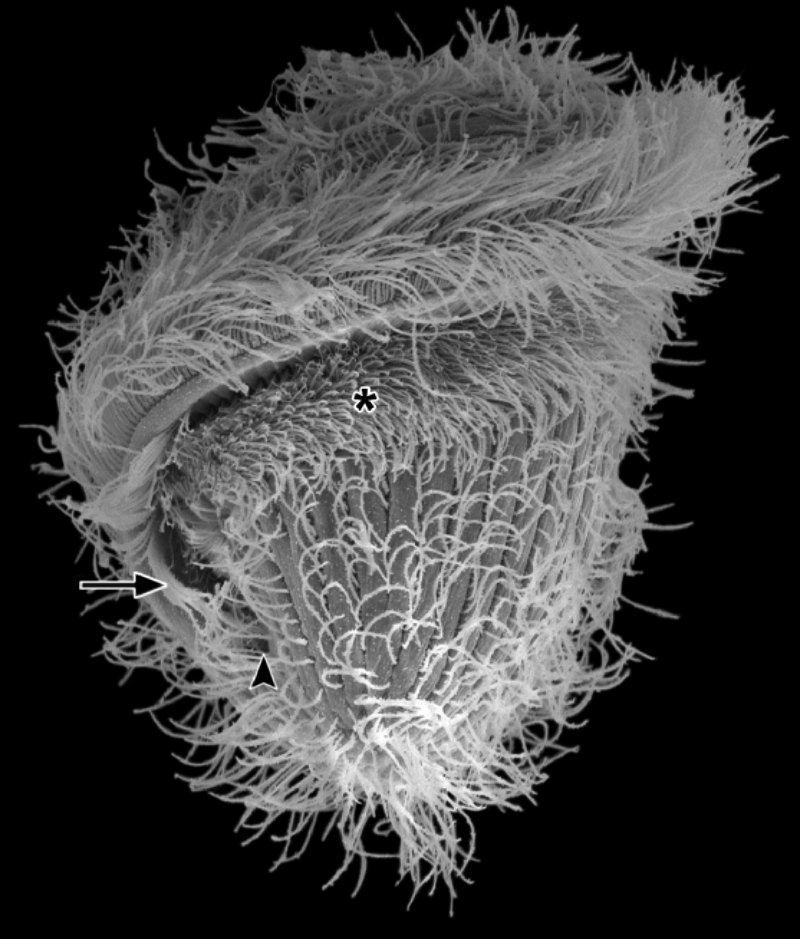In pictures: Brachonella pulchra
Posted on July 26, 2018 by Laura Cox
Researchers have found Brachonella pulchra in freshwater sediment near Prague. They decided to take a closer look at these metopids and the results are pretty amazing:

- B. pulchra was first found in the Hamburg Botanical Garden in 1927
-
B. pulchra is 100 micrometres long - that's 0.01cm
The researchers used light microscopy and scanning electron microscopes to view the eukaryote in more detail.

© William Bourland, Johana Rotterová and Ivan Čepička The microbes live in freshwater sediment, and swim by using cilia to propel through the water.
When they are in soil, they encyst and close up. When there is enough water, they open up and start to move around in search of food.
B. pulchra eats bacteria and protists. Depending on what they eat, the colour of their cytoplasm changes. The German populations of B. pulchra have violet cytoplasm, possibly because their food source consists of more purple sulphur bacteria.

© William Bourland, Johana Rotterová and Ivan Čepička To find out more about B. pulchra, you can read the full research paper here.
